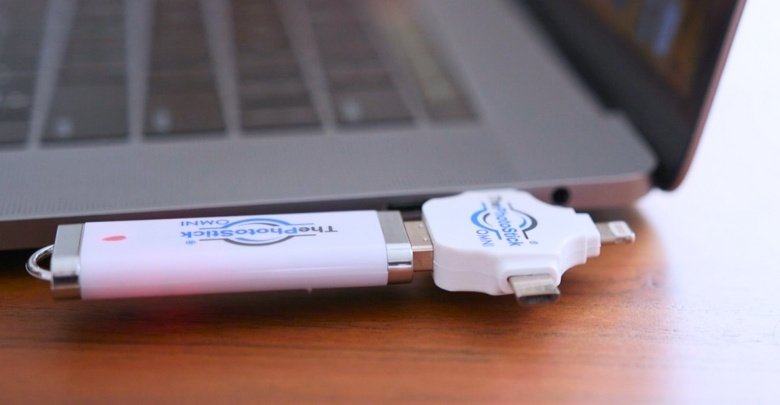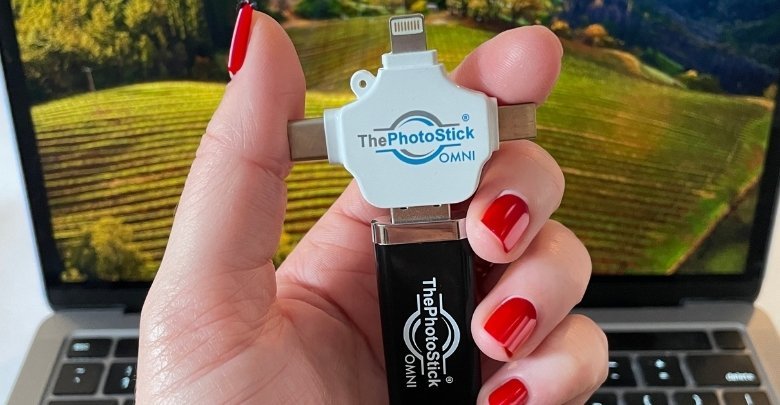We spend less time enjoying moments these days, but when we do find time, we cherish it by visiting new places or spending time with our family and friends. We capture these memories by recording videos or taking photos. However, the main challenge is that these photos and videos can easily be lost or deleted from our devices. So, where is the best place to store photos and videos?
The best place to store photos and videos involves a combination of cloud storage and physical backups. Use services like Google Photos or Dropbox for easy online access and backup with a physical drive like ThePhotostick Omni for added security against hardware failures or disasters.
In the following sections of this article, you will learn how to effectively store and safeguard your cherished memories for the longest possible time. So stay tuned.
Where is the Best Place to Store Photos and Videos?
We all take tons of photos and videos, but keeping them safe is super important. The best way to do that is by using Google Photos or Dropbox for cloud storage and a backup device like ThePhotostick Omni. This combo gives you easy access and strong protection at the same time. Here are some great reasons to store your photos and videos on these services.

Google Photos or Dropbox
Access from Any Device Anytime
Google Photos and Dropbox let you view your photos and videos from any device, whether it’s your phone or computer. You can access your media anytime you want, even when you’re on the go. Whether at home or school, your files are always available. This makes it easy to check out your memories wherever you are.
Safe From Phone Breakdowns or Loss
Your photos and videos are safe from phone breakdowns or loss with cloud services. Even if your phone gets damaged, your media stays safe. Since everything is stored online, your files are protected even if you lose your device. This means you don’t have to worry about losing precious moments.
Automatic Backup and Organization
Google Photos and Dropbox automatically back up your photos and videos, saving you time and effort. They also organize your media by date and album, making it easier to find specific pictures. You don’t have to manually upload or sort anything. This system keeps your media neat and easy to find.
Easy Sharing with Friends or Family
Sharing your photos and videos is simple with Google Photos and Dropbox. You can quickly send a link or invite others to view your albums. Whether it’s family or friends, sharing memories has never been easier. This feature makes it fun to keep loved ones connected to your moments.
ThePhotostick Omni
No Need for Internet Connection
ThePhotostick Omni works without an internet connection, so you can back up your media anytime, even offline. You don’t need Wi-Fi or mobile data to save your photos. This makes it a perfect option when you’re in places with no internet access. You can always rely on it to keep your files safe.
Simple, One-Click Backup
This device makes backing up your media super easy. You don’t have to worry about complicated steps—just plug it in and click. In seconds, your photos and videos are safely stored on the device. It’s as easy as pressing a button, so anyone can do it.
Physical Storage to Protect from Online Risks
Having a physical backup, like ThePhotostick Omni, protects your files from online risks like hackers or data loss. Even if your cloud account gets hacked, your media is still safe on this device. It’s like having a backup plan for your digital life. This extra layer of protection ensures your photos stay safe.
Store Large Files with Ease
This backup drive can handle large files without running out of space or limits. You don’t need to worry about your photos taking up too much room. This makes it perfect for storing high-quality videos or a large number of pictures. It’s a hassle-free way to save everything you need.
Do Cloud Services Offer Security for Storing Photos and Videos?
Yes, cloud services do offer strong security for your photos and videos. These platforms use encryption to keep your files locked and safe. Your media gets stored in protected servers that are regularly updated for better safety. This makes them more secure than storing everything on a single device.
Most cloud services also use backup systems to prevent data loss. Even if one server fails, your photos stay safe in another. They also let you turn on two-factor login, which adds another step to keep your account protected. These features give users more control and peace of mind while using the service.
Before using any cloud service, it’s important to check its privacy rules. Each company has its own way of handling its data and files. You should know who can access your photos and how they are managed. Reading the policy helps you trust where your memories are being kept.
What Can You Do to Your Photos If a Cloud Service Shuts Down?
You may feel that your memories are at risk when your cloud service goes down. But don’t worry, there are ways to keep them safe. Here’s what you can do to protect and recover your photos before anything gets lost.
- Download Everything Before the Shutdown Deadline: Most services give notice before closing, so use that time to download all your photos and videos safely. Store them temporarily on your computer or external drive.
- Transfer Photos to Another Cloud Platform: Move your media to another trusted cloud platform to keep them secure and easy to access anytime. Transferring early helps avoid last-minute issues.
- Use an External Storage Device: Save your downloaded files to a USB drive or backup device like ThePhotostick Omni for extra protection. This helps avoid cloud-related problems.
- Organize Files into Folders While Downloading: Sort your media into folders by date or event while saving them. That way, you can quickly find what you need later.
- Check for Automatic Export Tools: Some services offer tools that move your data to a new platform automatically. These tools can save time and prevent data loss.
- Keep Copies in More Than One Place: Don’t rely on just one backup—save your photos in at least two different places to avoid complete loss. Redundancy adds safety.
- Read the Service’s Final Instructions Carefully: Shutdown notices often include details about file export options or deadlines. Following them closely helps you recover everything without missing anything important.
- Enable Notifications for Future Service Changes: Turn on alerts or email updates from your new cloud provider. That way, you’ll always know if changes are coming.
How to Keep Memories Safe With ThePhotostick Omni for Years?
Photos and videos are important to keep safe, especially when they contain memories. With the Photostick Omni, you can back up everything without stress. Here are a few tips for preserving your memories with Photostick Omni for many years to come.

Step 1: Choose the Right Storage Size
ThePhotostick Omni comes in different sizes like 64GB, 128GB, and 256GB. Pick the size based on how many photos and videos you have. If you take a lot of pictures or make long videos, go for a bigger size. This way, you won’t run out of space too quickly. A bigger storage also means you won’t need to delete older memories.
Step 2: Plug It Into Your Device
ThePhotostick Omni works with many devices. Use the correct adapter to connect it to your device. It supports both Android and iPhone, as well as Windows and Mac. Also, it lets you easily transfer files without a computer, which is helpful when using your phone or tablet directly. You will be able to start it once you plug it in.
Step 3: Launch the App or Software
When the device is plugged in, open the app or software that comes with it. The app is simple and easy to understand. It shows clear buttons and steps for you to follow. You don’t need any computer skills to use it. Everything is made to be quick and stress-free.
Step 4: Start the Backup With One Click
Just click the “Go” or “Backup” button, and the device starts saving your media. It finds your photos and videos by itself. You don’t need to search through your folders. This saves a lot of time and avoids missing anything. Once done, it shows a message that backup is complete.
Step 5: Safely Remove and Store the Device
After you finish the backup, make sure to remove the device safely. Don’t just pull it out quickly. Keep it in a dry place so it doesn’t get damaged. You can use a small box or case to store it. This helps your device last longer and keeps your memories safe.
Step 6: Repeat Backups Regularly
Doing backups often is a good habit. It makes sure your new photos and videos are also saved. You can set a reminder to back up every two weeks. That way, you’ll always be ready if something happens to your phone. Regular backups mean nothing important gets lost.
Common Types of Devices That Can Be Used With Photo Sticks
Photo sticks are a simple way to save your photos and videos without much effort. They work with many different devices we use every day. But not every device works the same way with photo sticks. In the sections below, you’ll see which devices you can use and how they work.

Android Phones
Most Android phones work great with photo sticks, especially if they support OTG (On-The-Go) connections. You just need the right adapter to plug it in. Once connected, the stick can scan your phone for photos and videos. You don’t need any extra tools or accounts to get started. It’s fast, easy, and saves your files safely.
iPhones and iPads
Photo sticks also work with iPhones and iPads. When connecting USB stick with iPhone, you’ll need the correct adapter and a simple app to begin. After opening the app, the Photo Stick starts backing up your photos right away. It saves everything without you having to search. This makes it really simple to store your memories.
Windows Laptops
Photo sticks are easy to use with most Windows laptops. Just plug it into the USB port and open the software. You can click one button to start saving your pictures and videos. It finds files automatically, so you don’t have to search for them. This helps clean up your laptop while keeping your memories safe.
MacBooks and iMacs
Mac devices like MacBooks and iMacs also support photo sticks. The process is almost the same as using them on Windows laptops. Once you plug it in, the software helps you back up everything with one click. It’s a simple way to make sure your photos are not lost. Even if you’re not good with computers, it’s easy to use.
Tablets
Tablets that support USB or OTG connections can use photo sticks too. Android tablets usually work right away with the right plug. For iPads, you may need a lightning or USB-C version. The stick works just like it does on a phone. It’s great for people who take photos using their tablet.
Smart TVs with USB Ports
Some smart TVs let you plug in a photo stick to view photos and videos. This is helpful when you want to see memories on a big screen. While TVs can’t back up files, they can read the stick’s content. You can show vacation photos to family right from your couch. It’s a fun and simple way to enjoy saved moments.
Cloud Storage vs. ThePhotoStick Omni—Which Would You Choose if You Had to Choose One?
Choosing the right way to store your photos and videos can feel confusing. Both cloud storage and ThePhotoStick Omni offer great benefits. Let’s compare them side by side so you can decide which one suits your needs best.
| Point | Cloud Storage | ThePhotoStick Omni |
| Internet Needed | Needs a stable internet connection to upload or view files. | Works without the internet after setup. |
| Access Anywhere | Access your files from any device, anywhere. | Needs to be physically plugged into a device. |
| Setup Difficulty | May need an account and login; it can feel tricky. | Very simple; plug in and press one button. |
| Monthly Fees | Usually requires a monthly or yearly subscription. | One-time payment with no extra cost. |
| File Safety | Encrypted, but files are stored online, which can be hacked. | Files are offline and safe from online threats. |
| Storage Limit | Limited unless you pay for more space. | Comes with large storage options (up to 1TB). |
| Backup Speed | It may be slow if the internet is weak. | Fast transfer directly from your device. |
| Sharing Files | Easy to share files with others through links. | Not built for sharing; better for personal backups. |
| File Organization | Automatically sorts by date or type. | Finds and stores photos, but folders are basic. |
| Use With Old Devices | Might not support older phones or systems. | Works well with many old and new devices using adapters. |
Both options help protect your memories in different ways. ThePhotostick Omni is great if you need speed and control without internet access. If you like easy access from anywhere, cloud storage might be better. Pick the one that matches how you like to save your photos.
Frequently Asked Questions
Still thinking about the best way to keep your photos and videos safe? We’ve put together some helpful FAQs to answer things not already covered above. These common questions will help you learn more tips and ideas to store your memories the smart way.
Can I Store My Photos on a Smart Home Device?
Most smart home devices, like Alexa or Google Nest, are not made for storing personal files. They’re great for voice commands and automation, but not for storage. You’d need a connected cloud service to actually save your photos. It’s better to use a cloud or USB backup instead.
How Do I Store Photos From a Digital Camera Safely?
To store digital camera photos safely, transfer them to your computer first. From there, use cloud storage or a photo stick to back them up. Keeping them on just your camera’s memory card is risky. It can easily get full or damaged without warning.
How Do I Organize My Stored Photos Easily?
The easiest way to organize photos is by folders named by date, event, or people. Both cloud and physical storage allow this system. It helps you find photos quickly and keeps things neat. Avoid dumping all pictures into one folder, as it gets messy fast.
What’s the Safest Way to Store Old Family Photos Digitally?
Scan old printed photos and store them on both cloud and physical backup. Using only one method is risky. Scanned digital copies are easier to protect from damage, loss, or fading. Keep backup copies in more than one place for long-term safety.
Is It Safe to Store Personal Videos on a Phone Long-Term?
Phones can lose data due to damage, theft, or technical issues. So, storing personal videos on your phone long-term is not safe. Always back them up to the cloud or external storage. That way, you can get them back if something happens to your phone.
What If I Run Out of Space on My Backup Device?
If your backup device runs out of space, you can transfer old files to a second device or upload them to cloud storage. Always check how much storage your device has. Choose one with more space if you take a lot of high-quality photos and videos.
How Often Should I Back Up My Photos?
It’s best to back up your photos at least once every two weeks. If you take lots of photos daily, do it weekly. This way, you won’t lose recent memories. You can set calendar reminders to help make it a habit.
Bottom Line
Since so many memories can be saved digitally, deciding how to store your photos and videos is more important than ever. Both cloud storage and ThePhotostick Omni offer helpful solutions, depending on what matters most to you—convenience or control. If you often ask, “Where is the best place to store photos and videos?” the answer lies in using both options together.
Cloud platforms like Google Photos give you quick access from anywhere, while physical backups like ThePhotostick Omni protect your files even without internet. This combination helps keep your memories safe from loss, damage, or technical issues. No matter what device you use, having both a cloud and a physical copy ensures you never lose your precious moments.






